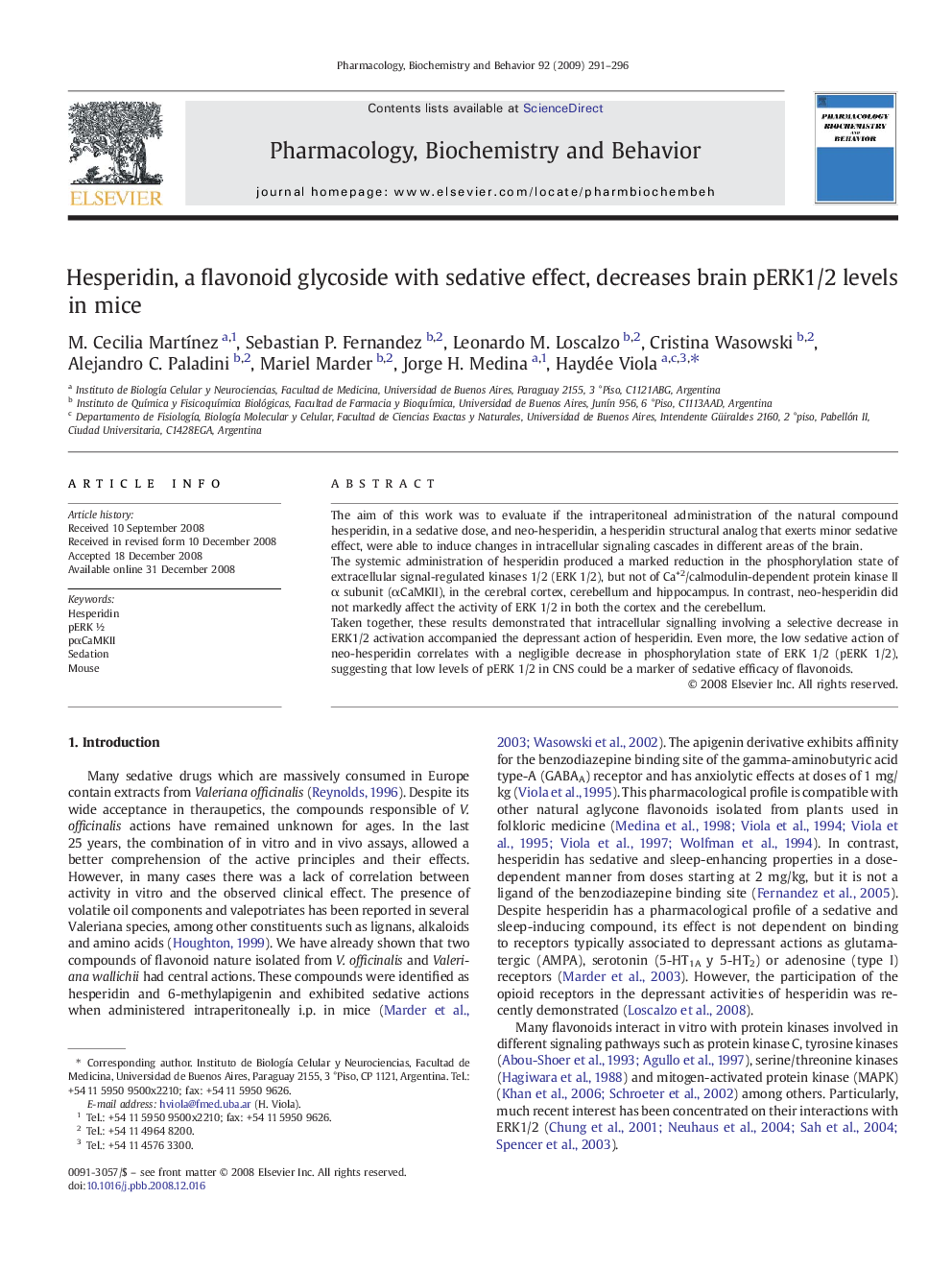| Article ID | Journal | Published Year | Pages | File Type |
|---|---|---|---|---|
| 2013714 | Pharmacology Biochemistry and Behavior | 2009 | 6 Pages |
The aim of this work was to evaluate if the intraperitoneal administration of the natural compound hesperidin, in a sedative dose, and neo-hesperidin, a hesperidin structural analog that exerts minor sedative effect, were able to induce changes in intracellular signaling cascades in different areas of the brain.The systemic administration of hesperidin produced a marked reduction in the phosphorylation state of extracellular signal-regulated kinases 1/2 (ERK 1/2), but not of Ca+2/calmodulin-dependent protein kinase II α subunit (αCaMKII), in the cerebral cortex, cerebellum and hippocampus. In contrast, neo-hesperidin did not markedly affect the activity of ERK 1/2 in both the cortex and the cerebellum.Taken together, these results demonstrated that intracellular signalling involving a selective decrease in ERK1/2 activation accompanied the depressant action of hesperidin. Even more, the low sedative action of neo-hesperidin correlates with a negligible decrease in phosphorylation state of ERK 1/2 (pERK 1/2), suggesting that low levels of pERK 1/2 in CNS could be a marker of sedative efficacy of flavonoids.
